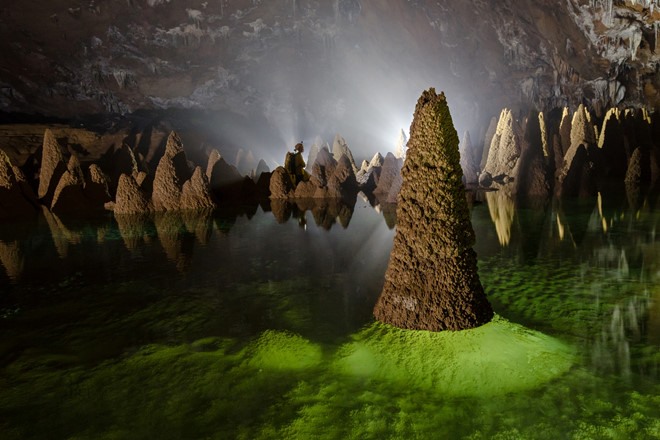 Environment
Environment

Scientists at the
 |
| Speolabeo hokhanhi, the new blind cavefish species found in Hang Va Cave in the central province of Quảng Bình. — Photo recaptured by Phước Bửu |
QUẢNG BÌNH — Scientists at the
Nguyễn Đình Tạo, a researcher at the institute, announced the discovery of Speolapeo hokhanhi, a blind cavefish in the province’s Hang Va Cave.
Tạo and his associates made the announcement through a scientific report on Zootaxa, an international journal for animal taxonomists in September this year. Research on the new species was conducted during field trips in Quảng Bình’s
“Speolabeo hokhanhi, a new species, can be distinguished from Speolabeo musaei by having no papillae on the lower lip, no hump immediately behind the head, a duckbilled snout and a shorter caudal peduncle,” said the report.
It also added that only six species of subterranean fishes have been reported from karst regions lying between Việt
According to Tạo, the newly-found cavefish has a white to pinkish coloured body and all of its fins are transparent.
The fish species, Speolabeo hokhanhi, is named after Hồ Khanh, a local guide who discovered many caves in
The researchers also suggested the use of the phrase “hokhanh’s blind cavefish” in English and ‘cá mù hang va hồ khanh’ in Vietnamese to describe the cavefish species.
Hang Va Cave is located 900m behind the Sơn Đoòng. Nguyễn Châu Á, a member of the British Cave Research Association and director of a local travel company providing sole adventurous tours to Sơn Đoòng, said he found similar cavefish in the world’s biggest cave and is waiting for confirmation by experts.
Á suspected dark water in the cave is the evolutional cause to the no-eye condition on the newly-found fish species. He also believed there is a tiny underground stream connecting the Sơn Đoòng and Hang Va, facilitating the moving of the fish between the two caves.
Experts expected to find more new cavefish species in these karst caves once the research activities are fostered in the area. — VNS
 |
| View of part of the Hang Va Cave in the ’kingdom of karst cave’ Quảng Bình Province. — Photo courtesy of Oxalis |